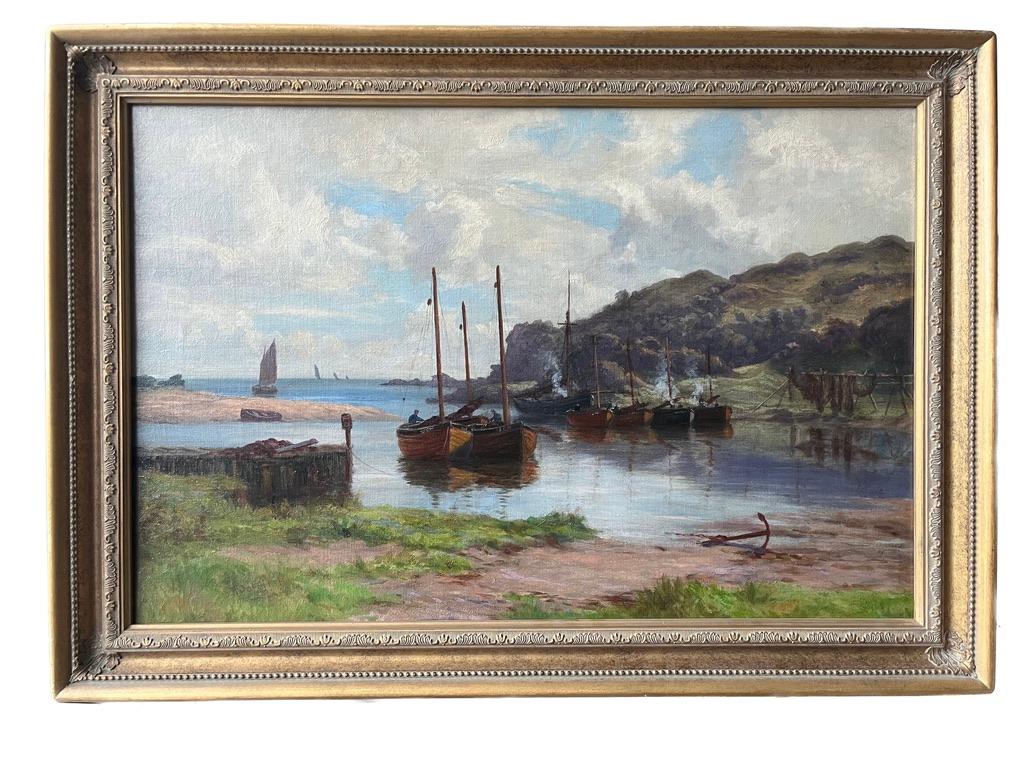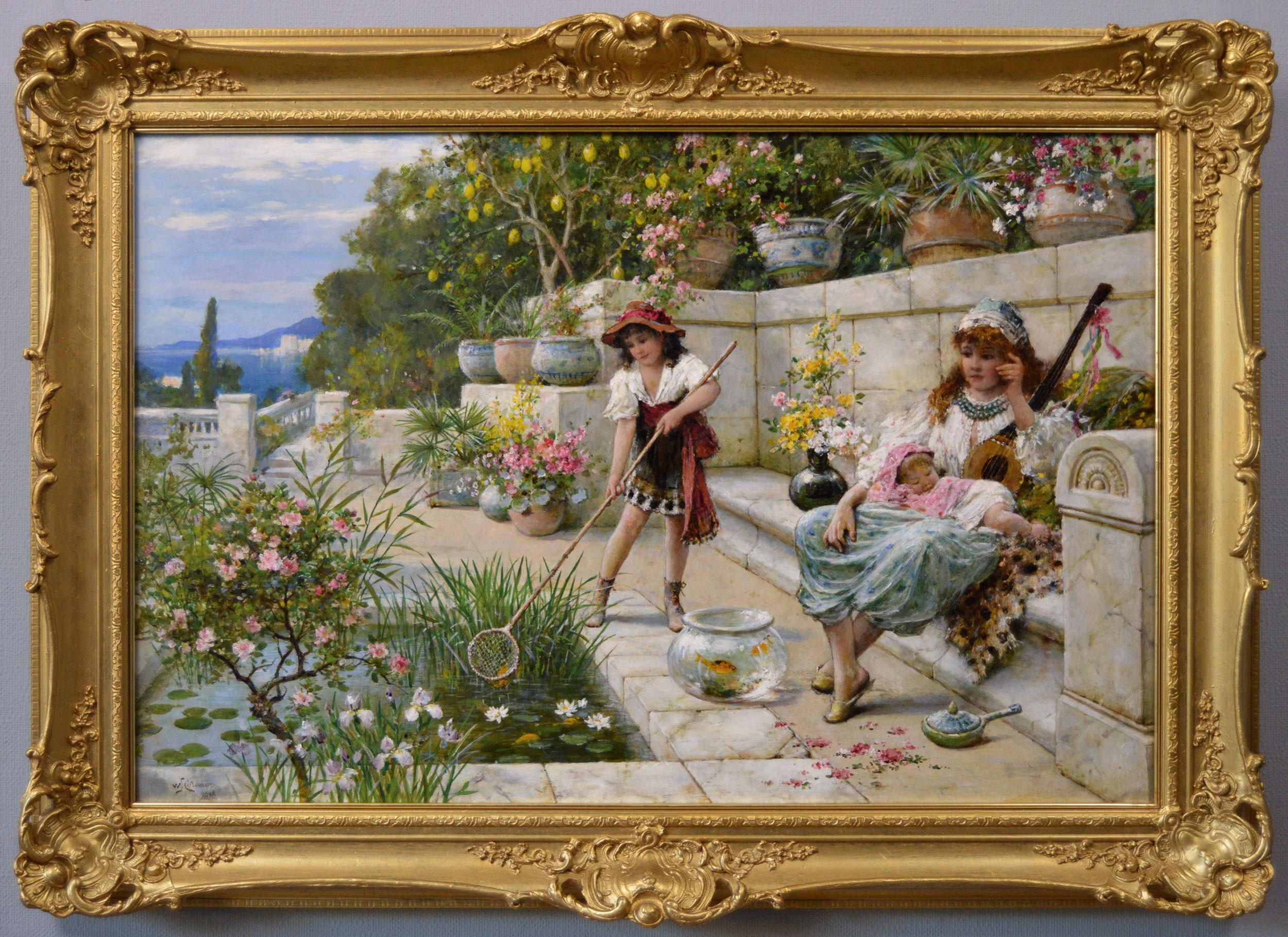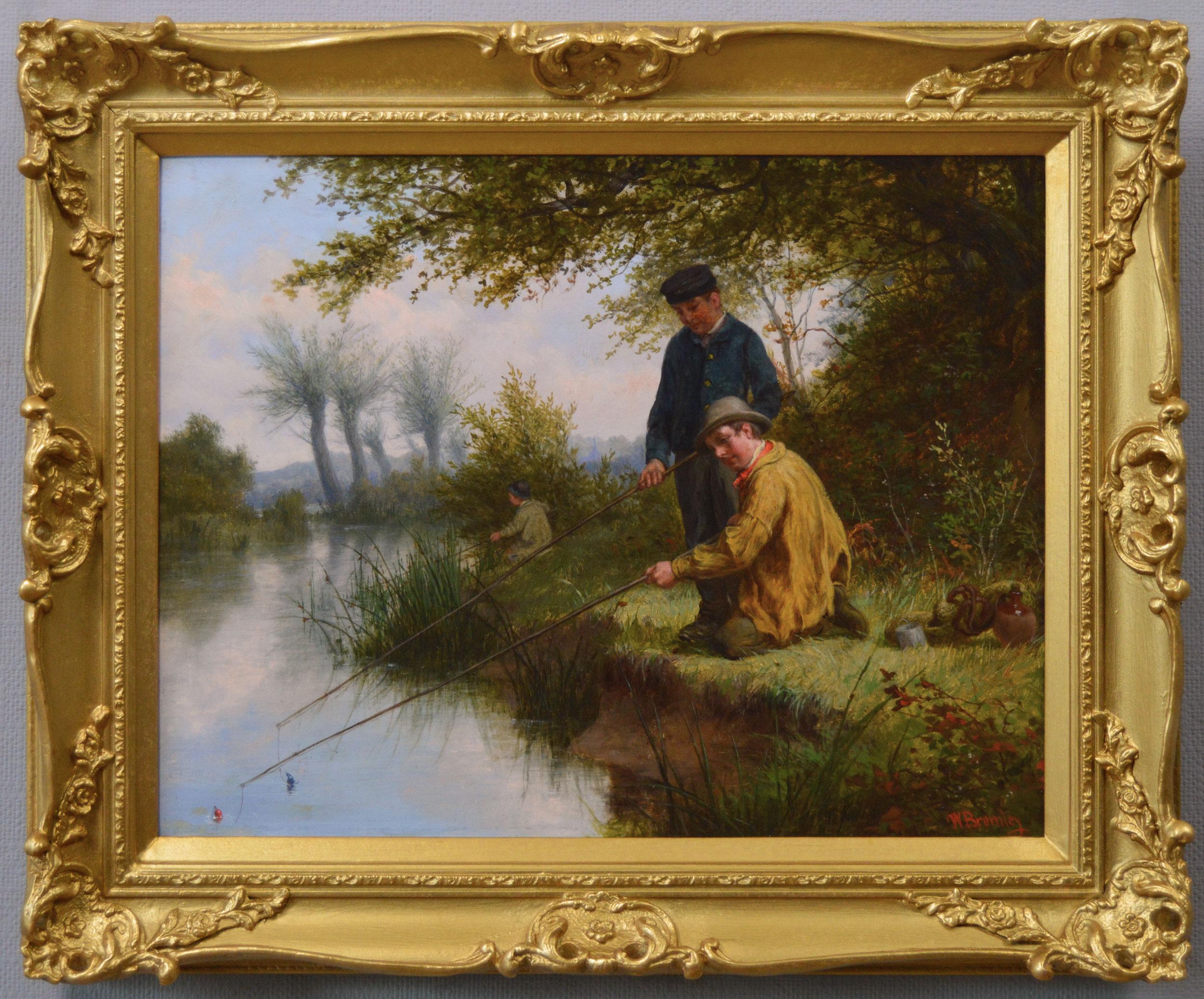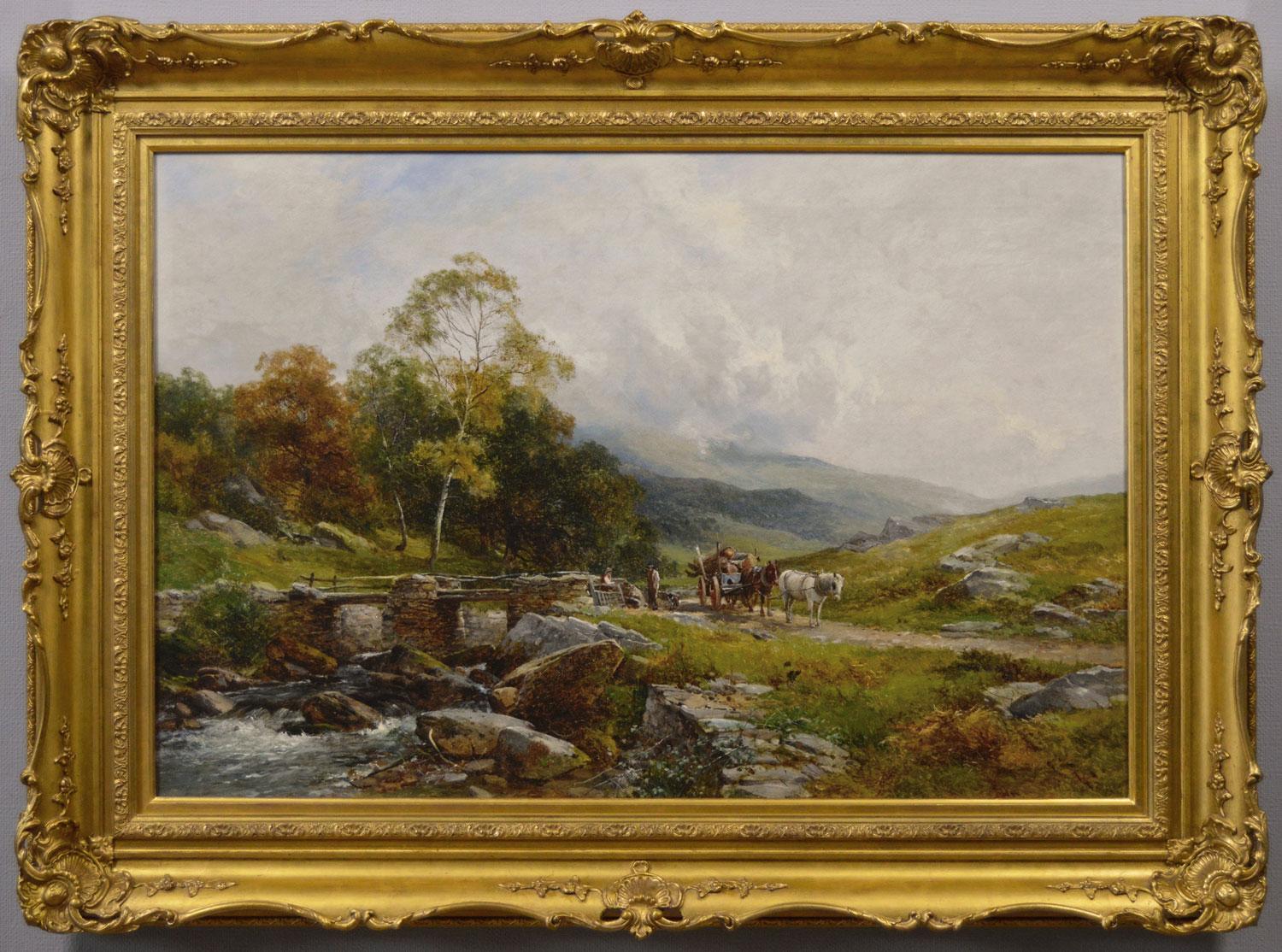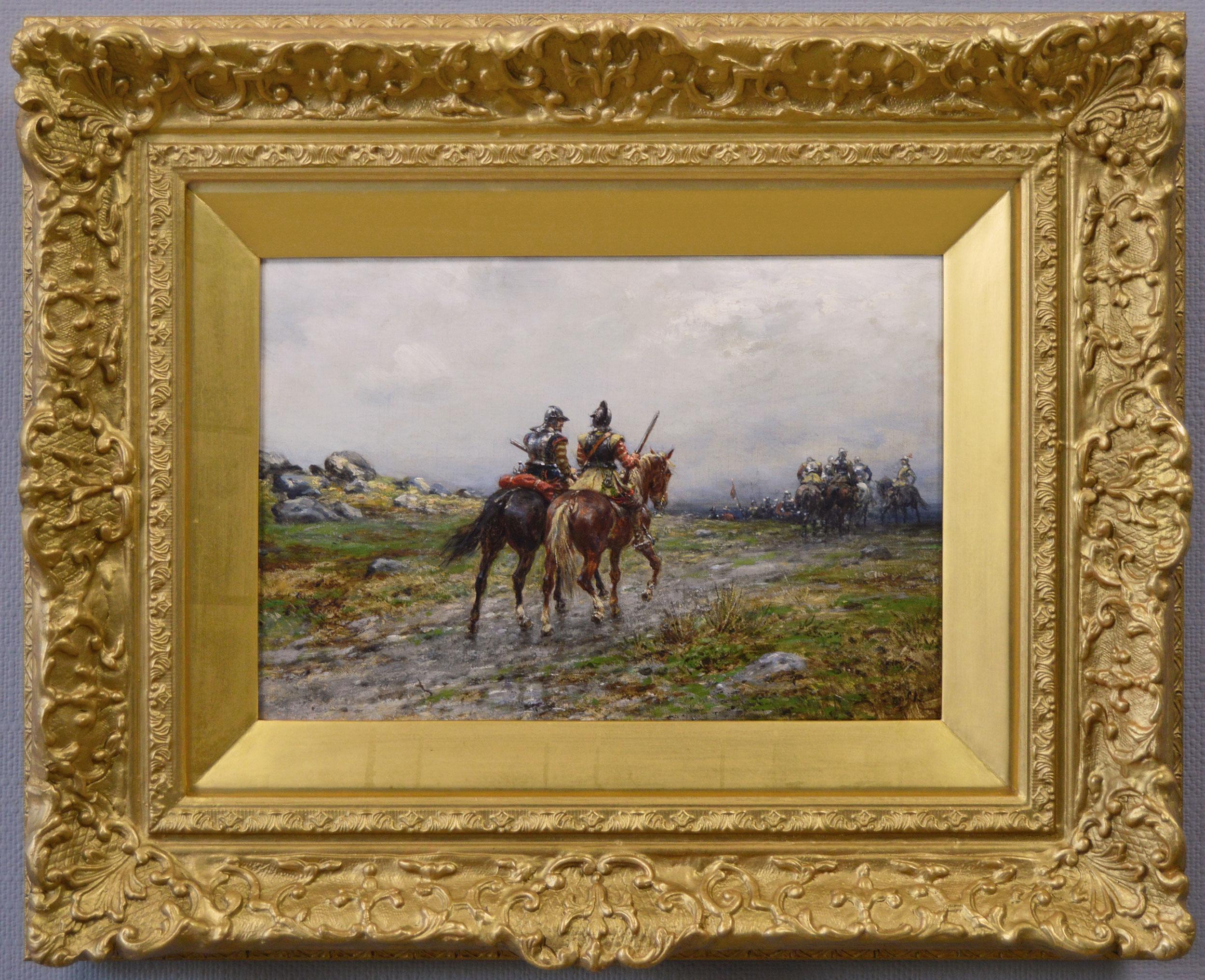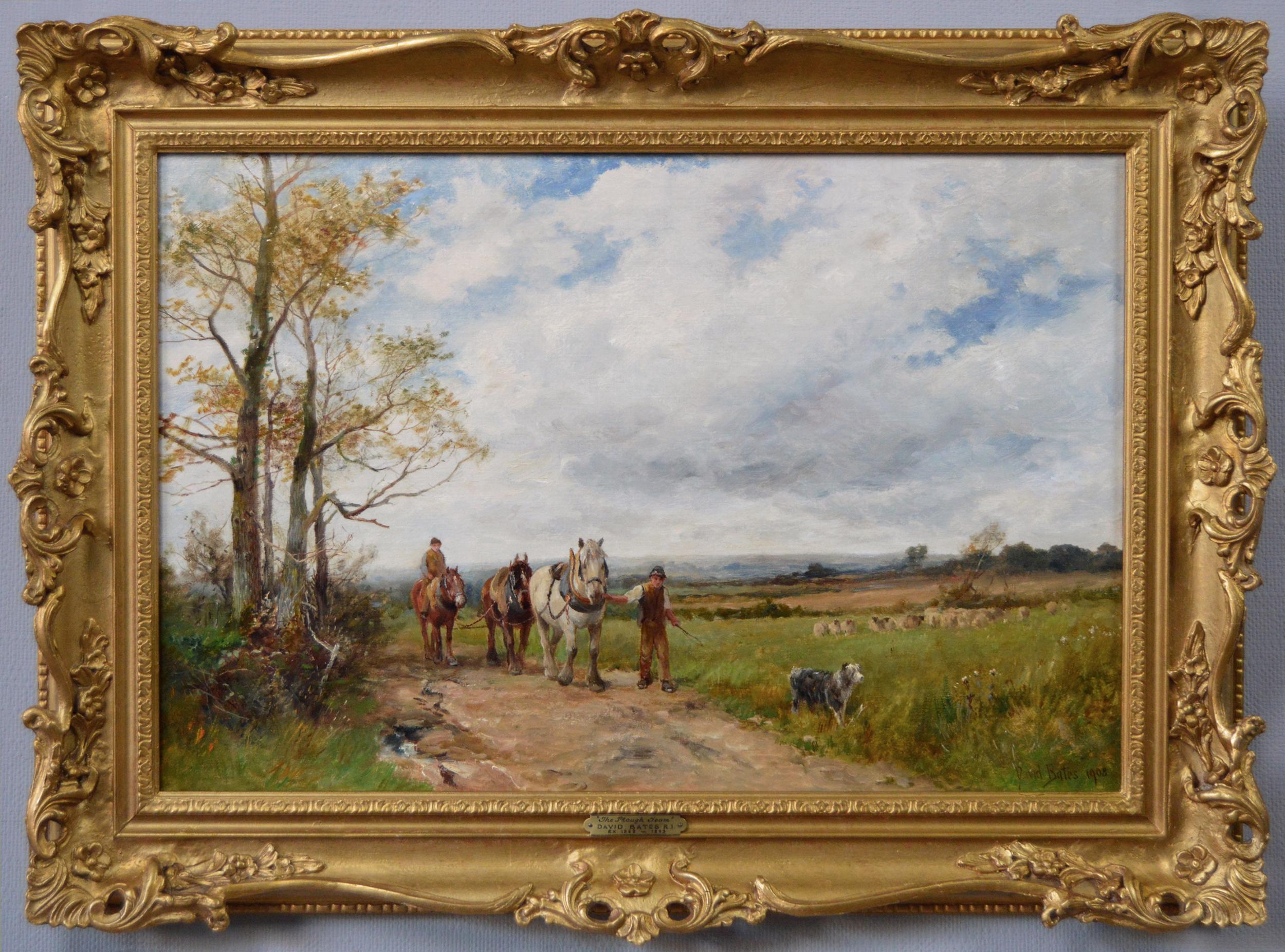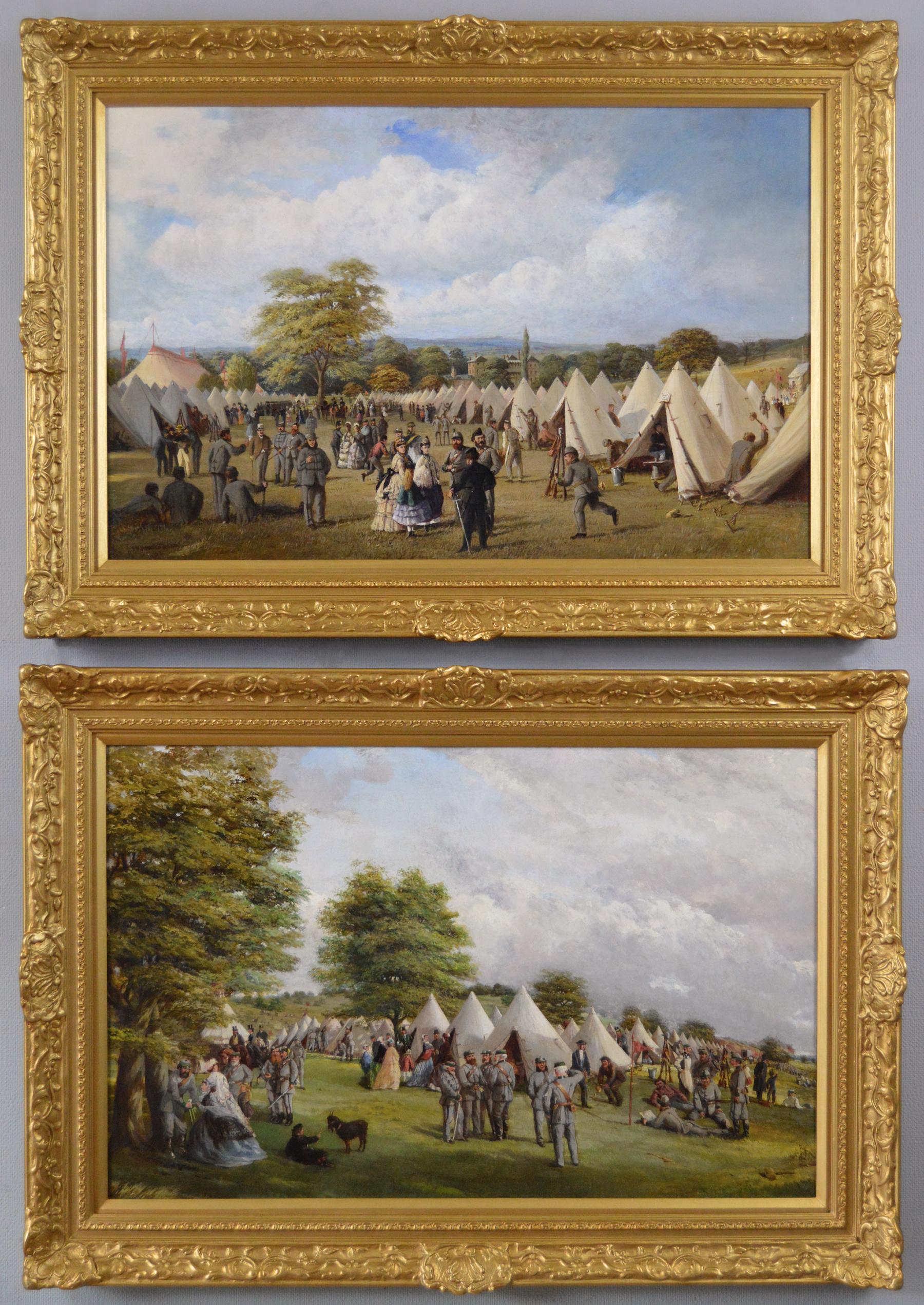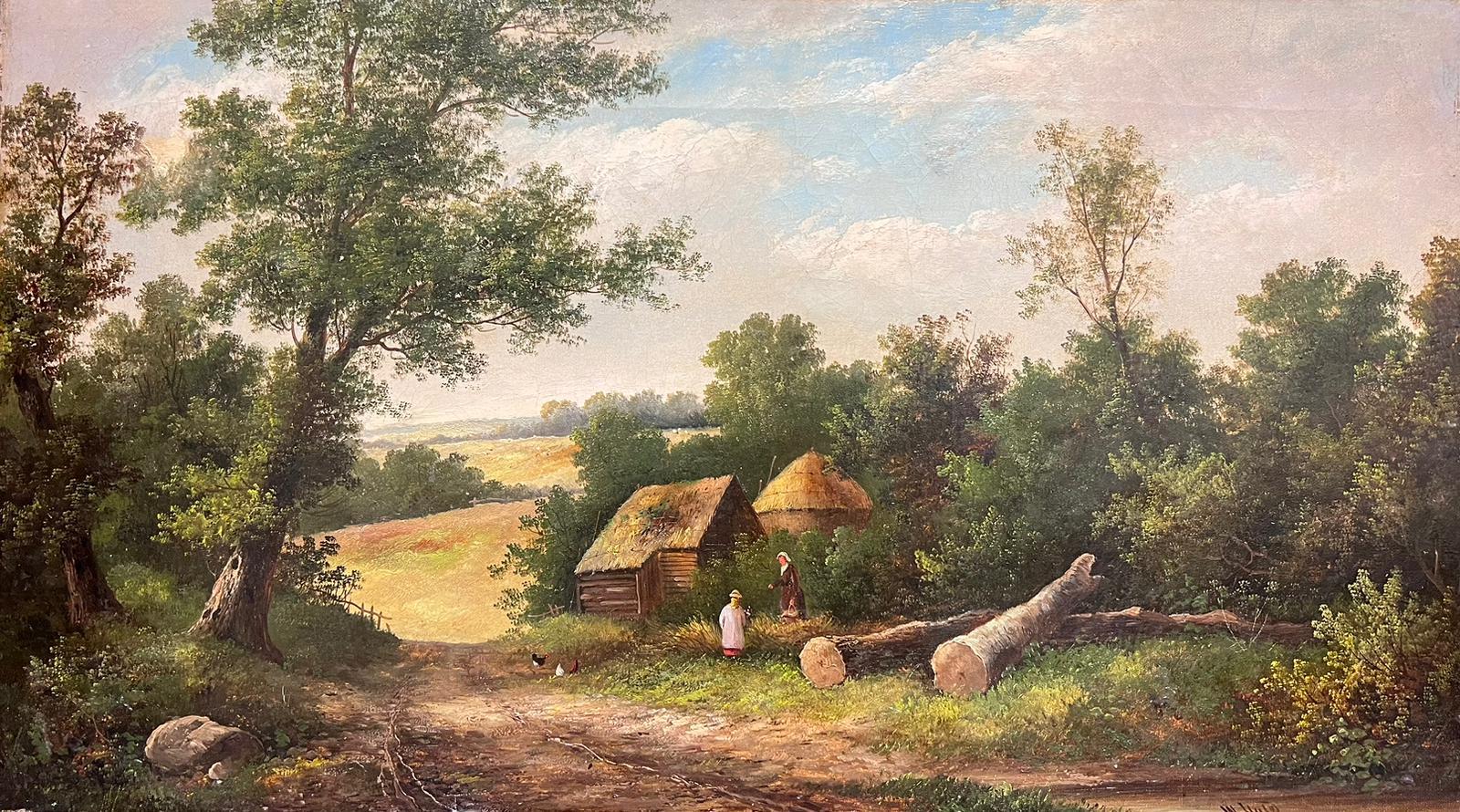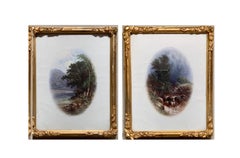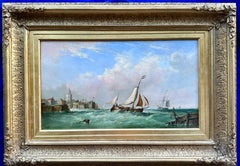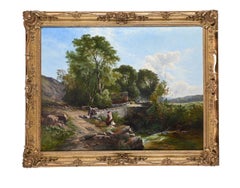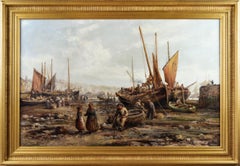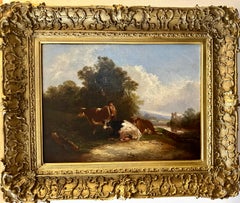
English 19th century Antique landscape with horses and farmer by a Cottage
View Similar Items
Want more images or videos?
Request additional images or videos from the seller
1 of 12
WILLIAM SHAYER SENIOR (1787-1879)English 19th century Antique landscape with horses and farmer by a Cottagecirca 1840
circa 1840
About the Item
- Creator:WILLIAM SHAYER SENIOR (1787-1879) (1787 - 1879, British)
- Creation Year:circa 1840
- Dimensions:Height: 19 in (48.26 cm)Width: 23 in (58.42 cm)Depth: 1 in (2.54 cm)
- Medium:
- Movement & Style:
- Period:
- Condition:The painting is in good original condition and has been recently cleaned and re-varnished.
- Gallery Location:Woodbury, CT
- Reference Number:1stDibs: LU507313706782
About the Seller
5.0
Platinum Seller
These expertly vetted sellers are 1stDibs' most experienced sellers and are rated highest by our customers.
Established in 1983
1stDibs seller since 2016
404 sales on 1stDibs
More From This SellerView All
- Pair of Antique British River landscapes, with waterfalls, mountains and treesBy Walter WilliamsLocated in Woodbury, CTA pair of Victorian English oils on canvas, North Wales river landscape scenes. Walter Williams (1835-1906) was an English landscape painter who was active in the late 19th century....Category
1870s Victorian Landscape Paintings
MaterialsCanvas, Oil
$2,962 Sale Price25% OffFree Shipping - 19th century English marine Sailing scene of Dutch fishing boats by a harborBy Henry King TaylorLocated in Woodbury, CTHenry King Taylor was a marine and coastal scene painter who lived in London. He exhibited at the Royal Academy from 1859 to 1864 with titles includi...Category
1850s Victorian Landscape Paintings
MaterialsCanvas, Oil
Henry King Taylor19th century English marine Sailing scene of Dutch fishing boats by a harbor , 1859$4,760 Sale Price20% OffFree Shipping - 19th century English Victorian oil landscape with figures, a stream and treesBy Henry John BoddingtonLocated in Woodbury, CTHenry John Boddington. 19th century English landscape with figures by a riverside. Simply one of the finest quality English landscape Ive ever had the pleasure of owning . This i...Category
1850s Victorian Landscape Paintings
MaterialsCanvas, Oil
$10,000 Sale Price20% OffFree Shipping - Antique oil 19th century View of Venice, The Grand Canal VeniceBy William MeadowsLocated in Woodbury, CTView of the Grand Canal in Venice by one of England's best-known landscape and Venetian painters. This example is a very well-painted piece and is a great composition. It is framed in an English Classic running pattern frame. Tracing the story of William Meadows, the son of James Meadows, is sometimes a little difficult. In earlier census returns he gave his place of birth as Epping, but in later census returns he said that he was born in Mountnessing in about 1825. Between 1841 and 1901 William is recorded as William James, William George, and in 1881 simply as George, and these apparent changes of name were explained by a chaotic personal life which contrasts with his tranquil paintings of the English countryside and Venice. An entry in The Fine Arts Journal in 1847, concerning the Theatre Royal, Dumfries, reveals that "The scene-painter is Mr. W.J.Meadows, the son of Mr. Meadows, of the Surrey”. Initially, William had begun his career by following in the family footsteps at one of the theatres where his grandfather had performed. However, his training as a scene painter most probably came closer to home under his father's tuition, possibly at The Lyceum Theatre in London in 1844. (See the previous page on James Meadows for further details). In 1850, William married Lydia Maria Jarvis (born in Norwich c.1826) at St Pancras Old Church, close to St Pancras Station in London. By the time that the census was taken the following year, William and Lydia were living at 16, High Street in Poole, Dorset. So far it has been not been possible to identify a census entry for 1861 for the couple. However, when William exhibited "A scene in Surrey' at the Royal Hibernian Academy of Arts in Dublin in 1865, he gave his address as 187, Hampstead Road, London, not far from the St Pancras area once again. The reason for William's obscurity in the 1861 census may lie partially in his financial difficulties, as well as his frequent changes of address. In 1864, The Law Journal's list of impending bankruptcy proceedings included an entry for "Meadows, William George (known as William James Meadows), artist, of Old Kent Road, previously of Beal Road, Old Ford, previously of Wanstead Flats, Wanstead". A family source has revealed that William tried changing career not long afterward, when he became the landlord of The Black Bull Inn in Fyfield in Essex on the 9th November 1866, and that he "gave an opening dinner there" on 29th November 1866. However, if William was trying to achieve financial stability by changing careers, the 1871 census would suggest that it was an unsuccessful interlude. In 1871 William was recorded under the name of William George but is identifiable as the same person by his age, place of birth, and the personal details of his wife. He no longer gave his profession as an artist, but as an "Eating Housekeeper", back in the East End of London and living at 200, High Street in Shoreditch. Two servants were living with the couple, but more unusually there was also another resident, whose occupation was listed as "bailiff in possession". The presence of a live-in bailiff, therefore, seems to suggest that William's financial difficulties were far from over. In addition to his financial woes, William’s marriage to Lydia also appears to have been a stormy affair. In 1867 in London she petitioned for a divorce from William, although she must have been initially reconciled to him as the couple was living together (with their bailiff!) in 1871. However in 1874, Lydia once again petitioned for a divorce and this time the separation was definitive, and Lydia moved to a separate address in Holborn where she was living at the time of the 1881 census as a "retired publican". William, meanwhile, married for a second time in Southwark in 1875, under the name of William George Meadows. His second wife, Helen Grace Higgs, was born in Tipperary in Ireland in about 1841. By the time of the 1881 census, the couple was lodging over a pub at 87, High Holborn in London, where William is recorded simply as "George Meadows, Landscape painter". In the 1891 census, the couple was lodging at The Green Dragon...Category
1890s Victorian Landscape Paintings
MaterialsOil, Canvas
- Antique Scottish Highland Loch landscape, with sunlit streaming onto the waterBy Francis E. JamiesonLocated in Woodbury, CTFrancis Jamieson was a painter in oil and watercolor of highland landscapes and coastal scenes. (The work of this highly prolific artist is curious since the oils and watercolors have two quite distinctive styles and subject matter. The oil paintings are most frequently seen and these are highland landscapes or loch scenes - sometimes they appear to be signed with pseudonyms such as 'W. Richards' and 'Phil Hips' - the location is usually inscribed on the reverse. The watercolors are often coastal scenes with boats and figures on a shore, painted in a more traditional Victorian style, and possibly pre-date the oils. F. E. Jamiesons's beach scenes were published as postcards around 1920 by G. Ajelli & Co. of London on a textured card to give the appearance of oils. Jamieson is known to have traveled widely in the South of England between the wars selling his work but does not appear to have exhibited.) This quote in parentheses is taken from Jeremy Wood's excellent book 'Hidden Talents - A Dictionary of Neglected Artists Working 1880-1950'. - Work by Francis Jamieson can be seen at the usual sites. Please note that on all these sites you will find F. E. Jamieson variously listed as Francis E. Jamieson, F.E.Jamieson, Frank E. Jamieson, Frederick E. Jamieson etc. You may also find some listings under his various pseudonyms of Arnould Pienne, Charles Maurice, Graham Williams...Category
1910s Victorian Landscape Paintings
MaterialsCanvas, Oil
$1,560 Sale Price20% OffFree Shipping - 19th century Fall English landscape with figures on a path in the highlandsBy Benjamin Williams LeaderLocated in Woodbury, CTWonderful Autumn/Fall landscape by one of Englands finest landscape painters. Born as Benjamin Williams, the artist added the surname Leader (his Father’s middle name) to distingui...Category
1880s Victorian Landscape Paintings
MaterialsCanvas, Oil
$2,360 Sale Price20% OffFree Shipping
You May Also Like
- Victorian landscape painting of the River Thames with horses wateringBy Edwin Henry BoddingtonLocated in Harkstead, GBA very atmospheric scene of a horse and cart crossing the river Wey (a tributary of the river Thames) under a beautiful twilight sky. There is wonderful detail and light with the ar...Category
19th Century Victorian Landscape Paintings
MaterialsOil, Canvas
- Victorian landscape painting of Scottish fishing boats moored in a bayLocated in Harkstead, GBA very tranquil scene of fishing boats moored in harbour with a sunlit sea beyond. Painted with a most attractive palette of blues and greens and with a pleasing composition that le...Category
19th Century Victorian Landscape Paintings
MaterialsOil, Canvas
- 19th Century seascape oil painting of Penzance harbour, CornwallBy William Edward WebbLocated in Moreton-In-Marsh, GloucestershireWilliam Edward Webb British, (1862-1903) Penzance Harbour Oil on canvas, signed Image size: 29 inches x 45.5 inches Size including frame: 38 inches x 54.5 inches A pleasing coastal painting of Penzance Harbour at low tide by William Edward Webb. In the foreground, a fisherman sells his catch to a woman and her daughter, whilst figures in horses and carts wait for others to unload their boats. William Edward Webb was born in Cheltenham, Gloucestershire in 1862 to William Benjamin Webb and Ellen Butler. His father was a printer and an artist and it is highly likely he received tuition from him. Following the death of his mother, his father remarried and moved the family to Manchester sometime after 1871. By the 1880’s, Webb had started working as an artist and later set up a studio at 30 Exchange Buildings in Manchester. He began exhibiting at the Manchester City Art Gallery from 1890, where he showed more than 60 paintings during his lifetime. He also exhibited at the Royal Academy and Walker Art Gallery Liverpool from 1892. He married Clara Foster in 1899 and the couple lived at 1 Sylvan Grove, Chorlton Upon Medlock in South Manchester with their daughter Florrie. He became friends with the artist Walter Emsley (1860-1938) who also lived in Manchester. Although he spent the rest of his life in Manchester, Webb travelled throughout the UK painting coastal and marine scenes around the main ports and harbours. He spent a great deal of time in the Isle of Mann painting numerous scenes along the coast including views of Peel and Douglas Harbour, subjects he frequently returned to. Webb painted in a highly distinctive style; loose and informal but which manages to retain the sense of perspective. He struggled with ill health and depression throughout his life which sadly led to his suicide 9 November, 1903. In 1974, a retrospective exhibition was held at The Old Customs House and Old Solent House in Lymington, which brought a new found interest in his work. His paintings are now highly sought after and are represented in many collections and Museums including the Astley Hall...Category
19th Century Victorian Landscape Paintings
MaterialsOil, Canvas
- 19th Century genre oil painting of a woman in a garden with two girlsBy William Stephen ColemanLocated in Moreton-In-Marsh, GloucestershireWilliam Stephen Coleman British, (1829-1904) By the Fish Pond Oil on canvas, signed & dated 1898 Image size: 23 inches x 35 inches Size including frame: 30.25 inches x 42.25 inches A beautiful painting by William Stephen Coleman of a woman with two girls in a semi classical style by a Mediterranean pond. The woman is depicted resting on a terrace with her young daughter asleep on her lap, whilst another child catches goldfish in a bowl. This tour de force would have most likely been painted by Coleman as an exhibition piece. William Stephen Coleman was a figurative painter who was born in Horsham in 1829. He was one of 12 children born to a physician named William Thomas Coleman and his wife Henrietta (née Dendy). Three of his siblings Rebecca Coleman (b1837), Helen Cordelia Angell (1847–1884) and George Coleman also became artists, inheriting their artistic talent from their mother’s side of the family. Coleman developed an interest in nature from an early age, producing drawings as a hobby. Despite his ability, he initially followed in his father’s footsteps and trained as a surgeon. However, this proved unsuccessful and by the age of 21 he had turned back to art, later gaining employment with the Dalziel Brothers, a firm of wood engravers who specialised in natural history illustrations. Sometime during the late 1850’s he moved to London where he married his first wife Henrietta Augusta Boultbee in 1858. Around the same time, he began producing illustrations for books; the first of which was entitled ‘Common Objects of the Country’ and published in 1858. He subsequently published two of his own books ‘Our Woodlands. Heaths, and Hedges’ in 1859 and ‘British Butterflies’ in 1860. After the death of his wife in 1860, his sister Rebecca and brother George went to live with him in Garway Road, Paddington. Rebecca would often assist him with the wood blocks for his illustrations. As well as working as an engraver, he also began producing classically influenced paintings featuring figures in landscapes. Initially these were executed in watercolours but later extended to oil paintings. He began exhibiting at the Dudley Gallery in 1865 and was one of the original committee members. He continued to exhibit there until 1879 and was a committee member up until 1881. By 1869, he had also begun to work on pottery decoration and in 1871 was asked by Minton’s to establish an Art Pottery Studio at Kensington Gore. Whilst at Minton’s, he produced figure designs for their ceramic ware. His sister Rebecca also worked at Minton’s and they moved to Belle Vue in Chelsea to be closer to the studio. From 1881, he lived at 3 St John’s Wood Studios, Queens Terrace in Paddington and in 1888 moved to 43 Broadhurst Gardens in Hampstead. In 1893 one of his classically inspired works ‘The Gold Fish Bowl...Category
19th Century Victorian Figurative Paintings
MaterialsOil, Canvas
- 19th Century genre landscape oil painting of three boys fishing on a riverBy William BromleyLocated in Moreton-In-Marsh, GloucestershireWilliam Bromley British, (1816-1890) Gone Fishing Oil on canvas, signed Image size: 13.5 inches x 17.5 inches Size including frame: 18.75 inches x 22.75 inches A picturesque genr...Category
19th Century Victorian Figurative Paintings
MaterialsOil, Canvas
- 19th Century historical genre oil painting of English civil war soldiersBy Ernest CroftsLocated in Moreton-In-Marsh, GloucestershireErnest Crofts British, (1847-1911) On the March Oil on canvas, signed Image size: 8.5 inches x 12.5 inches Size including frame: 17 inches x 21 inches A wonderful historical painti...Category
19th Century Victorian Figurative Paintings
MaterialsCanvas, Oil

